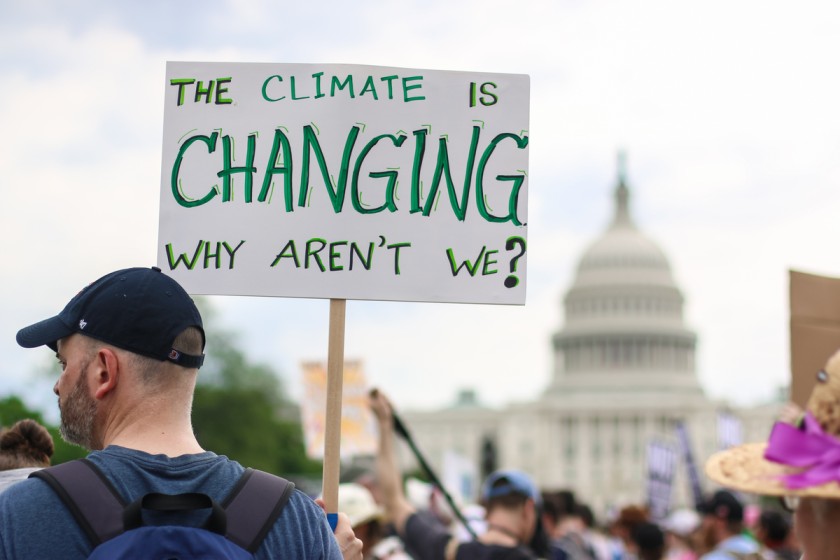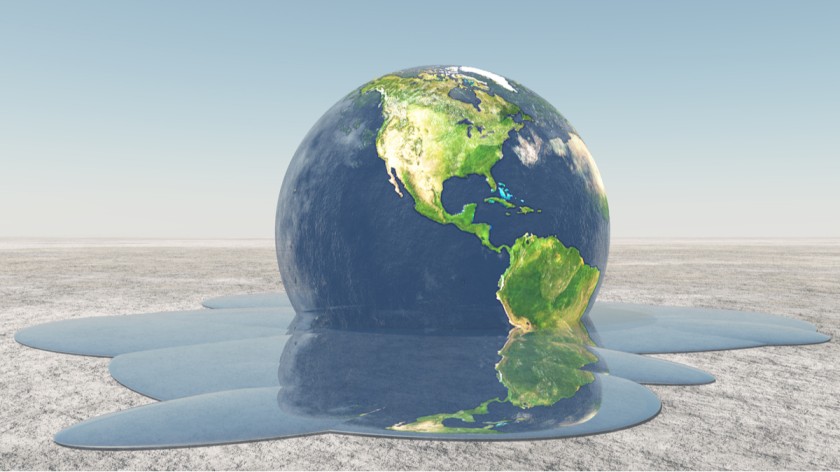UN Report on Fashion and Climate Change: How is it Going to Affect Your Business?



Picture a world that is thus: people are fleeing cities submerged by rising sea levels. If it’s not the sea, then it is the heat: scorching, unforgiving, making people leave places where their family has been for generations.
Think, for a moment, of a mother in this harsh world - she is devastated from losing her children to a wildfire that has ravaged her town. Now imagine yourself as a fashion designer or entrepreneur in this future. What marketing strategy would you use to sell clothes to that grieving mother? Or the people worried sick about their futures? The simple answer is that you cannot.
State of the World: UN Report on Climate Change
The recent UN Report on Climate Change paints an ominous picture of our future. Climate change is “widespread, rapid, and intensifying”; it has now also been decisively linked to human activity. The message from the UN is unequivocal: our world will witness more extreme weather events and get worse unless we act.
In a statement to the press, Alok Sharma (president-designate of the United Nations Climate Change Conference) called the “next decade [as] decisive for climate action.” Sharma urged world governments and businesses to follow the science and embrace responsibilities. Sharma specifically called out the fashion industry to do more to fight climate change.
The Fashion Industry & Climate Change

It is said that you can’t do business on a dead planet. We at Fashinza have a different spin on this quote: a world torn apart by hurricanes, wildfires and floods has no appetite for fashion.
Even besides consumer decline, climate change will affect other parts of the fashion industry. Cynthia Cummis, director of private sector climate mitigation at the World Resources Institute, points out that fashion companies can expect “more disruption” to their businesses going forward. This is because “extreme weather events will cause supply chain and manufacturing disruptions.” The labor force in developing countries will also be impacted by climate change. All these factors combined will hurt fashion manufacturers and distributors.
The writing on the wall is clear as can be: fashion brands and manufacturers must combat the effects of climate change. Otherwise, the industry will shrink before collapsing entirely. If not for the planet, preserving our long-term bottom line is a compelling reason for acting now. Let’s take a look at what brands can do.
Current Efforts Are Not Good Enough: More Needs to Be Done
To combat climate change, the UN (particularly countries that signed the Paris Climate Agreement) set a 1.5°C target. This figure represents the goal to limit global warming levels to 1.5°C above pre-industrial levels. Unfortunately, this international threshold/target is becoming harder to achieve. The next decade of action may determine an easier or harder future for life on our planet.
The present UN report provides a critical review of the fashion industry’s efforts to combat climate change. The consensus is that efforts by major fashion companies “are [either] not urgent enough. . . [or] in many cases misplaced entirely.” Particular scrutiny is placed on the issue of supply chain emissions.
Supply chain emissions (SCE) account for the majority of the fashion industry’s carbon footprint. Reducing said emissions is also a major and complicated problem by itself. Major fashion brands have vowed to reduce supply chain emissions as follows:
- Kering has promised to reduce SCE by 70 percent (per unit of value added) by 2030
- Burberry has pledged 46 percent SCE reductions by 2030. Burberry has also vowed to be climate positive by 2040.
- PVh Corp. (owner of Tommy Hilfiger and Calvin Klein) has promised to reduce SCE by 30 percent by 2030.
- Levi’s has pledged 40 percent reduction in SCE by 2025
In addition to the above pledges, the Fashion Industry Charter for Climate Action has pledged to reduce industry-wide greenhouse gas emissions to net zero by 2050. This Charter matters because it represents the broader fashion world’s commitment to fight climate change. Read the charter here.
Piecemeal Efforts: Fashion Industry Needs a Big Picture Approach
Fashion writer Rachel Cernansky lauds the aforementioned (SCE) pledges and actions as ambitious. But Cernansky questions how fashion brands will go about reducing supply chain emissions. The question of ‘how’ is unclear if not unconvincing.
The fashion industry needs to make “comprehensive, aggressive and urgent efforts” to combat climate change. According to Cernansky, this means:
- The use of more sustainable materials (e.g., by providing incentives to manufacturers)
- A complete overhaul of the supply chain that involves:
- the transition to renewable energy
- Rejecting landfills in favor of more sustainable end-of-life product options
- Accounting for a product’s entire lifespan. This includes designing products that can be repurposed into a new generation of products.
- A move away from the fast fashion models of production
Fashion brands must adopt a “big picture” approach to achieve the goals of the Fashion Industry Charter. Richard Blackburn, professor of sustainable materials at the University of Leeds, points out that current efforts by fashion brands are piecemeal and too myopic. For example, a fashion brand may tweak a garment to make it eco-friendly or modify a part of the supply chain (rather than the whole). These efforts are simply not enough.
Time is of critical essence here. As mentioned above, the 2020s are “a decade of decisive action” for governments and businesses. With each year, it will become increasingly difficult for fashion brands to achieve net-zero emissions and fulfill the 1.5°C pledge.
Science, not Marketing
Prof. Blackburn points out that the fashion industry’s commitment to sustainability is not based on science. Many fashion brands unfortunately use deceptive marketing practices to present themselves as sustainable. This will not do.
How can companies be more scientific in their fight against climate change? A good place to start is with the Science Based Targets Initiative (SBTI). The SBTI pushes companies “to set science-based emissions reduction targets.” Even better, it prevents a company from getting lost in the “fog” of long-term climate change solutions. This means pursuing emissions reduction and sustainable action in the here and now (as opposed to 20-30 years in the future). This fact cannot be stressed enough: if you (as a fashion brand) want to be eco-friendly and fulfill climate change pledges, take the problem head on in 2021. Do not wait until 2030 or (worse) 2050 comes rolling in!
Conclusion
War and natural disasters have always been unkind sisters to fashion. When armies march and people shed tears, where nature wreaks wrath and people feel fear, the world cares little for haute couture. Put simply: the fashion world thrives when the world is stable and at peace.
Take the pledge-today, not tomorrow-to be the fashion brand our planet needs. Innovate and embrace sustainable practices: bit by bit, we can all create a new eco-friendly fashion world. The alternative is a world with no fashion industry: its epitaph etched upon the submerged gravestone of a “post-human” planet.



















